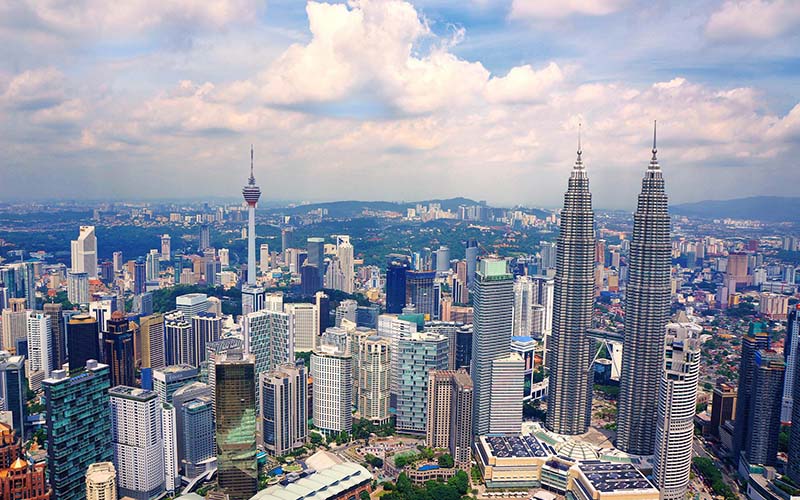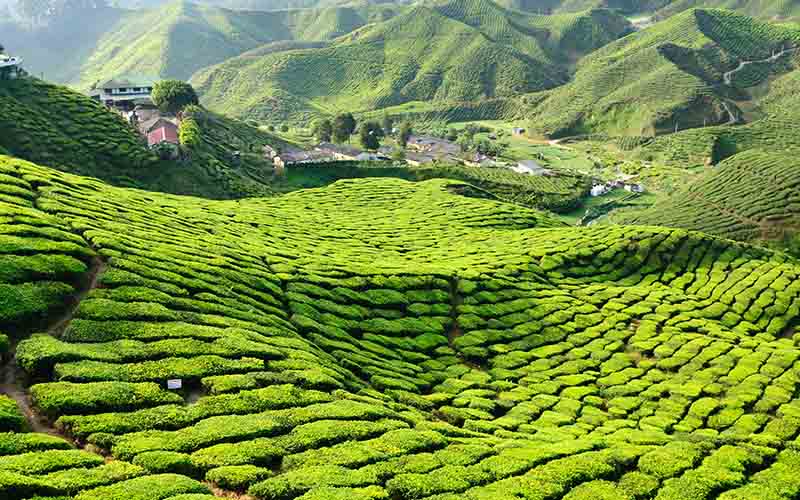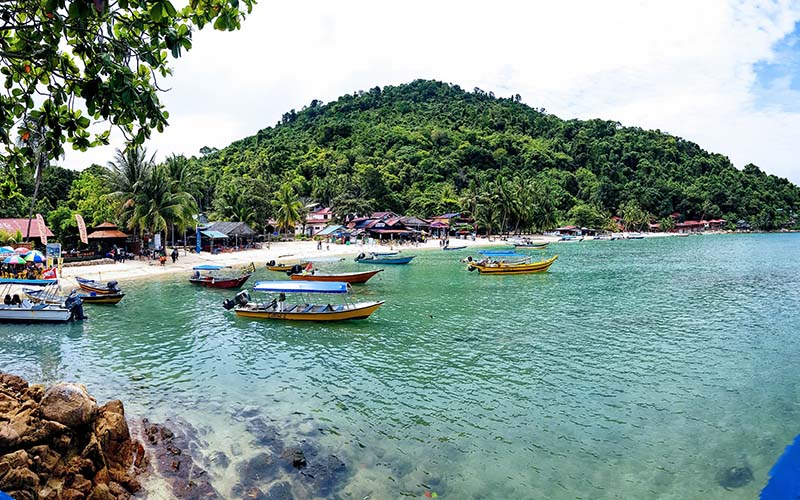Are you planning a trip to Malaysia for yourself and your loved ones? If your answer is yes, you should do so without any further consideration since it is one of the best places on the planet. Steeped in multicultural essence and brimming with dynamic cities, dramatic landscapes, lush rainforests, gorgeous beaches, idyllic isles, duty-free shopping, happening nightlife, and splendid national parks. Malaysia is a destination for many experiences.
The humid rainforests in Borneo and the mainland are full of wildlife, while the highlands offer a cooling retreat from the heat. Malaysia’s tourism has immensely grown in the past few years due to its development and weather conditions. This tropical country has two distinct areas: Peninsular Malaysia or the eastern part and the western side, or Borneo. Visitors must obtain a Malaysia visa before they begin their journey in this tropical country. The different kinds of Visas that visitors can apply for are a Malaysia tourist visa or a Malaysia visit visa, a transit visa, a student visa, a medical visa, or a business visa.
People traveling to Malaysia should also get a valid travel insurance policy to protect them from any adverse situations or emergencies in a foreign land. But knowing about the best places to visit in Malaysia is not enough to ensure a smooth and hassle-free trip. Once your visa is confirmed, the next thing you need to do is figure out the best time to visit this country, so that you are comfortable throughout the journey. Hence, let us now take a detailed look at the best weather and timing options for a trip.

Weather In Malaysia
Malaysia is a tropical country with temperatures ranging from 24 degrees Celsius to 32 degrees Celsius in the lowlands and 16 degrees Celsius to 24 degrees Celsius in the highlands. Malaysia is situated near the Equator and therefore experiences hot and humid weather and rainfall throughout the year. Humidity throughout the country reaches up to ninety percent. The monsoons in Malaysia are different in different regions. Peninsular Malaysia receives an annual rainfall of 2500 mm, and East Malaysia receives around 5080 mm of rain. However, if you opt to visit this location during the off-season, you can rest easy knowing you will get to save a significant amount of money. During peak seasons, flight ticket prices shoot up and eat away most of your holiday budget. One main advantage of traveling in the low season is that air ticket prices are less expensive and affordable in a way that won’t break your budget. And since the flights have fewer travelers, you may even get lucky with a free upgrade to a higher class.
Accommodation
Since the best months to travel to Malaysia’s east coast for the beaches and islands are from April to September, you should book your accommodation beforehand if you wish to get the best benefits. These months are warm and sunny, and even if it rains, they do not last long. As a result, most tourists try to opt for this period as it provides them with a chance to experience Malaysia in its prime. However, if you are looking for affordable alternatives, opt for the low seasons without any further thought. Since tourist influx is low during this time, there are plenty of choices open for you to decide which type of hotel or resort you would like to stay in during your vacation. Moreover, hotels and resorts offer heavy discounts with special promotions to boost their sales during low season months. It is the best time to take advantage of these price cuts and enjoy your time in leisure at a swanky hotel of your choice.
Top Attractions

There are numerous kinds of tourist attractions accessible in Malaysia, and you will be able to enjoy all of them depending on your convenience. If you wish to opt for scuba diving and snorkeling are on your wish list, you must visit the islands between March and June. The best months to travel to Langkawi and Penang are April to November, as the climate on the west coast during these months is relatively cold and pleasant. The weather in Cameron Highlands is pleasant all year round since the annual temperature is around 22 degrees. Hence, you may tour this part of the destination anytime, no matter when you are planning your vacation. However, you should also keep in mind that these months will get a significant number of tourists, so it may be challenging to get the best view. If you plan a trip during the low season, there is a lesser crowd which means no long queues and waiting time. You can explore the Petronas Twin Towers, Genting Highlands, Legoland Water Park, KidZania, and Sunway Lagoon at a hassle-free, comfortable pace.
The Rainy Season
Although Malaysia is known for its hot and humid weather conditions, it has several benefits that will make your vacation worthwhile. If you are not a fan of beaches and wish to spend your time elsewhere, you can opt to take a tour of the beautiful Malaysian rainforests. Since this country is rich in forest and foliage, these light rains transform the landscape into a refreshing, green-hued, scenic panorama. If you are all right with some rain and are a nature lover, then this is the time for you to visit the lush rainforests of Malaysia. Head for an extraordinary nature expedition at the Cameron Highlands and Sarawak Nature Reserves to reconnect with nature and witness the exotic wilderness and wildlife up close. A guided tour takes you through well-traveled, gentle hiking paths where you can marvel at beautiful waterfalls and spot Orangutans and many exotic birds and animals.
Local Experiences
Another thing that you should do if you wish to acquire the most relevant outcomes is to take part in the local experiences. Malaysia is a vibrant tourist destination that will be able to teach you and your kids about different cultures, traditions, and customs. Although you may want to visit this place during the peak duration, if you opt for the low seasons, you will also get to explore the destination calmly while discovering unique locations that most travelers fail to. Rather than visiting Petronas Twin Tower in a hurry so that you can move to your next tourist attraction, you can explore the neighborhood and stumble upon some delightful sights such as Merchant Lane at Petaling Street, Perdana Botanical Gardens, and the Street Art along the River Klang. It is also an ideal time to meet new people, mingle with locals, and explore their lip-smacking cuisines.
Why Is It Better To Visit Malaysia During The Off-Season?
Low Seasons in Malaysia take away the pressure of hectic travel planning. Usually, on a holiday trip, every visitor wants to visit the same attractions which results in very few places to visit in Malaysia where there won’t be stifling crowds. Without the overwhelming crowd all around you, you can take your time, plan a pleasant and laid-back trip and have endless options to choose where to go and what things to do in Malaysia. You can choose a better location for your stay at lower prices, from where popular attractions are just minutes away. Also, the service is smoother and the staff is much friendlier due to the lack of crowds. It also gives you a chance to indulge in the local culture. If you have been longing to visit Georgetown in Penang and enjoy its rustic sights at leisure, then the off-season period is perfect to saunter around this gorgeous town.

Seasons In Malaysia
Before you pack your bags and get on a flight, you should also gain more information on the seasons and its impact on the experiences. Let us now take a detailed look at them:
1. Summer Season in Malaysia (June till August)
The Summers in Malaysia are from June to August. The temperature is high, and the rainfall is less during these months. The eastern part remains dry during this time of the year. March is the hottest month in Malaysia, with temperatures rising to 28 degrees Celsius. The Gawai festival (rice harvest celebration) and Dragon Boat Festival in Penang, Kota Kinabalu, fall in June.
2. Autumn Season in Malaysia (September till November)
Autumn in Malaysia is from September till November. The temperatures are still high during these months, and there is a gradual increase in rain showers. Hari Malaysia or Malaysia Day on 16th September, and Awal Muharram falls during these months. Deepawali and International music day too are celebrated in Malaysia. It is also an amazing time to travel ith your partner and visit the best honeymoon places in Malaysia.
3. Winter Season in Malaysia (December till February)
Visit Malaysia in winter to enjoy festivals like New Year and Christmas. Festivals like Chinese New Year and Thaipusam make it a favorable destination during these months. The rain showers during winter are heavy, and the temperature is low. Visiting the West Coast is recommended to escape from the chilly weather and snow to enjoy the sandy beaches and sunny skies.
Malaysian festivals
With so many different ethnic and religious groups represented in Malaysia, it will be unfortunate if your travels don’t take place around a festival. Religious festivals range from joyful pageants focused on families to graphically graphic acts of devotion.
- Ponggal in the middle of January is a celebration of the harvest and also thankfulness to the Sun Lord. It is the commencement of the Tamil month of Thai. The name Ponggal means “overflow,” and the traditional way to commemorate the occasion is to boil milk, sugar, and rice in a fresh clay pot over a wood fire until the concoction overflows, signifying plenty. House floors are decorated with mango leaves and kolam designs.
- Thaipusam in late January/early February. To honor Lord Subramaniam, Tamil and Hindu penitents wear intricate steel arches, or kavadis, that are fastened to their flesh with hooks and skewers. They also give milk in pots to please their Lord. The largest procession takes place in Batu Caves in Kuala Lumpur.
- Chinese New Year falls in late January/early February. when Chinese communities visit friends and family, pay debts, and give children red envelopes (hong bao/ang pao) containing cash. Chinese operas, lion and dragon dance troupes, and sausages are sold at markets, along with waxed ducks, chrysanthemums, mandarin oranges, and pussy willow. West Coast Malaysian main towns host Chingay parades, including floats, lion dancers, and stilt walkers.
- February’s Chap Goh Mei- The fifteenth and last night of the Chinese New Year celebration, or Guan Hsiao Chieh in Sarawak, is a time for even more fireworks and feasting; ladies who toss an orange into the sea on this auspicious night are said to be bestowed with virtuous husbands.
- Easter (March/April) until candlelit processions mark May Good Friday at churches like St. Peter’s in Melaka. Easter brunches are good who do not celebrate it but want to have something special to do. Local and international dishes are available there.
- April in Qing Ming At the start of the third lunar month, which marks the arrival of spring and a new agricultural year, Chinese families clean and renovate ancestral graves. Any old offerings, dust, and old leaves on the headstones are removed and re-painted. They make sacrifices like food, etc. They also pray for their deceased elders.
- May is Vesak Day. In the Buddhist temples, the crowd loses themselves in the prayers recited by the saffron-robed monk whereas they are celebrating the moment of the preaching of Buddha and his attainment of Nirvana by uniting the caged birds into the free skies.
- Fest Sabah (late May) Lasts for a week in Kota Kinabalu. During the night, visitors get the chance to test local kitchen, handcrafts, dance, and Kadazan musical instruments which culminate in Rumah Terbuka Malaysia Tadau Kaamatan, the harvest celebration that takes place in Kota Kinabalu.
- June is the birthday of the Yang di-Pertuan Agong. celebrations in the capital of KL to mark the birthday of the elected Malaysia’s monarch, the King who is chosen by the hereditary rulers of the country’s nine states. They are known as the Nine Sultans or the Nine Rajahs, every five years.
- June is Gawai Dayak. The Iban and Bidayuh people of Sarawak, in particular, commemorate the completion of rice harvesting with sumptuous longhouse feasts. The celebrations include a lot of events like traditional dances, blowpipe events, and tribal dances. Ideally, you should be near Bau or along the Rejang or Batang Ai rivers in a longhouse.
- On June 24 there is a paramount holiday for the Eurasian community in Melaka and it is called the Day of St. Peter when their boats are decked out in his memory too.
- In Georgetown, Penang, Melaka, and Kota Kinabalu, you can see a boat racing in the Dragon Boat extravaganza of the Chinese who committed suicide, protesting the harshness of the government.
- Sarawak Extravaganza Kuching celebrates Sarawakian culture with a month-long in August. It is a festival of arts and crafts, street parades, food stalls, and traditional games.
- Festival of the Hungry Ghosts is held during the seventh lunar month to comfort the spirits of the deceased who have been freed from purgatory. Beyond the gates of Chinese households, joss bowls, red candles, and paper currency are burned and Chinese street theatres are held.
- It is in such a manner that faithful Muslims the world over fast during the ninth month of the Islamic calendar, referred to as Ramadan. At night, they break their fasts with delectable Malay sweetmeats that are sold at stands outside mosques. If you plan a Malaysia travel during Ramadan, you will get to see the cultural and pious side of the country.
- Adilfitri, or Hari Raya Puasa, is observed in July or August. The only time the area’s royal palaces are exposed to the public is when Muslims celebrate the end of Ramadan by dining and seeing loved ones in open houses. Special prayers are also held in this pious month.
- On August 31, Malaysian National Day Parades are held marking the first independence (Merdeka) from the British at Merdeka Square, in Kuala Lumpur, and other cities.
- There is one more important festival in September, called the Mid-Autumn or Mooncake Festival. This festival is famous because people buy and share mooncakes, which are frequently filled with duck eggs and include sesame and lotus seeds. Like a harvest celebration, basically.
- In Sep-Oct during Navarathri Hindu temples honor the consorts of Shiva, Vishnu, and Brahman by hosting traditional dance and music performances over nine nights.
- Hindus celebrate Thimithi (October/November) with a firewalking ceremony when participants run over a hot coal pit to demonstrate the power of their religion.
- Deepavali (Oct/Nov), often called Diwali, is a Hindu holiday that commemorates the triumph of Light over Darkness. To draw Lakshmi, the goddess of prosperity, oil lamps are lit outside homes, and prayers are said at all temples. The main theme of the festival is how good always overpowers evil. Hindu temples celebrate Navarathri (September–October) with nine nights of traditional dance and song in honor of Shiva, Vishnu, and Brahman, the consorts of the Hindu gods. The houses and the areas in front are decorated with rangoli designs full of colors.
- Mosques are packed with Muslims for Hari Raya Haji/ Kurban Bayram (late October), a holiday during which people who have already performed haj, or trip to Mecca, are honored by the community. They sacrifice the goats and sell the meat to the less wholehearted.
- December 25th is Christmas. Major city shopping centers seek to build beautiful Christmas embellishments.
Conclusion
When planning a trip to Malaysia, you need to decide which part of Malaysia you plan to visit. If you plan to travel towards the west coast, the lowlands, or the highlands, November to March is the perfect time with dry weather and off-peak season prices. If you are traveling to the east coast, then travel between April and September to steer clear of bad weather and enjoy activities like snorkeling and diving. Remember to carry umbrellas as one can experience spells of rain at any time in Malaysia. However, you will have to take into consideration the customs of the holy Ramadan month that falls in these months as Malaysia is an Islamic country and it is expected for travelers to respect the traditions during this holy month. If you are specially looking for the cheapest time to travel in Malaysia then plan your holiday around mid-February to mid-May when most public holidays are over and kids are still attending school.
FAQ’s
In which languages is Malaysian spoken?
- The form of the Malay Language, or Bahasa Melayu, is recognized by the governments of Indonesia, Brunei Darussalam, Malaysia, and Brunei.
- In some areas of Singapore and Thailand, it is also extensively spoken.
- English, Mandarin, and Tamil are also widely spoken, especially in cities.